Since tweed-coated, leather-booted intrepid explorers of yesteryear first embarked on journeys into the true unknown, world exploration has driven a passion within us. Charles Darwin’s unquenchable curiosity landed him in the Galapagos Islands and rewarded us with the theory of evolution. Fridtjof Nansen, the grandfather of polar exploration was the first to cross the Arctic Ocean, sailing further north than any other man before him. The names Captain Cook, Marco Polo and Christopher Columbus ignite awe and a childlike sense of wonderment within us, their dusty footprints leading us down that path less travelled.
“Experiencing the world’s largest, oldest, highest or most extreme destinations – those that are truly and factually unsurpassable – provides us with an undeniable sense of achievement and goes some way to putting it all in perspective.”
The world is interminably fascinating – whether you’re cruising Greenland’s fjords, unwinding in a Beijing spa or going in search of ancient rock art in Botswana. Beauty is subjective and what one adores another will abhor. Anointing a destination ‘the best’ is a bold step, for what one perceives as perfection might not quite tickle the travel taste buds of another. Yet it is human nature to push the limits, a natural instinct which drives us to succeed and achieve, and our attitude to travel is no different. Experiencing the world’s largest, oldest, highest or most extreme destinations – those that are truly and factually unsurpassable – provides us with an undeniable sense of achievement and goes some way to putting it all in perspective. Only then, at the pinnacle of what the world has to offer, can you begin to fathom the sheer vastness and variety of it all.
On-a-Shoestring
The World’s Heaviest Building: Palace of Parliament, Bucharest, Romania
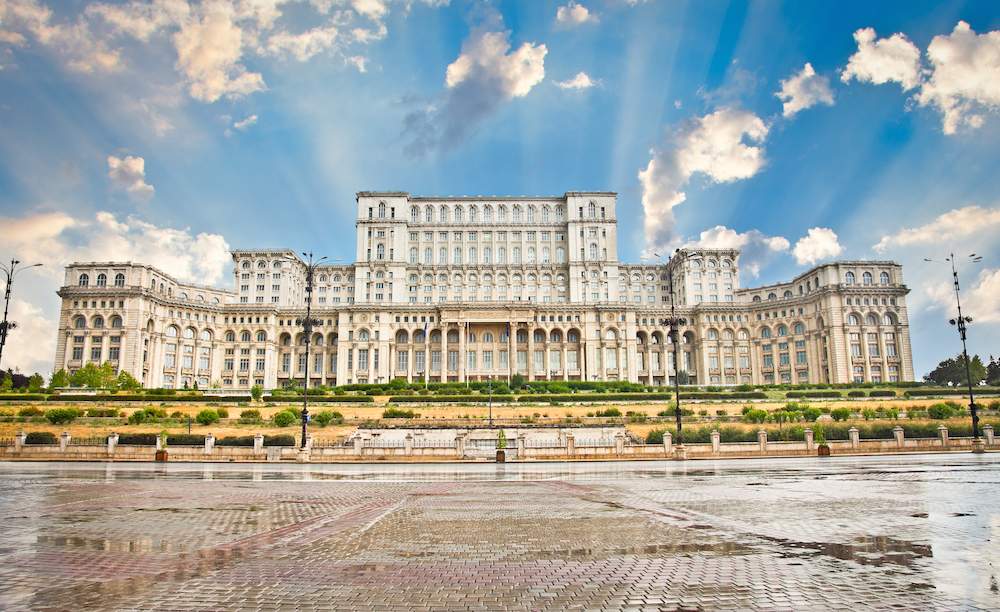
From the outside Bucharest’s Palace of Parliament might not be described as beautiful but it is undoubtedly impressive – and simply enormous.
The world’s heaviest building was built commissioned in 1984 by the Communist leader Nicolae Ceausescu and huge swathes of the city were razed to the ground the make way for a building that measures 270metres (885ft) long, 240metres (787ft) wide and measures 350,000 square meters (3.77 million square feet) – the equivalent of 280 Olympic size swimming pools.
It took 20,000 workers and 700 architects to build the 12 stories, 1,100 rooms, (at least) eight subterranean floors and a vast nuclear bunker. Said to have been built from two mountains of marble it is combined with 700,000 tonnes (1.5 billion lb) of steel and bronze, and 3,500 tonnes (7.7 million lb) of crystal glass.
How to visit:guided tours are operated inside the palace which today acts as Romania’s principal international conference centre.
The World’s Largest Buddhist Temple: Borobudur, Indonesia
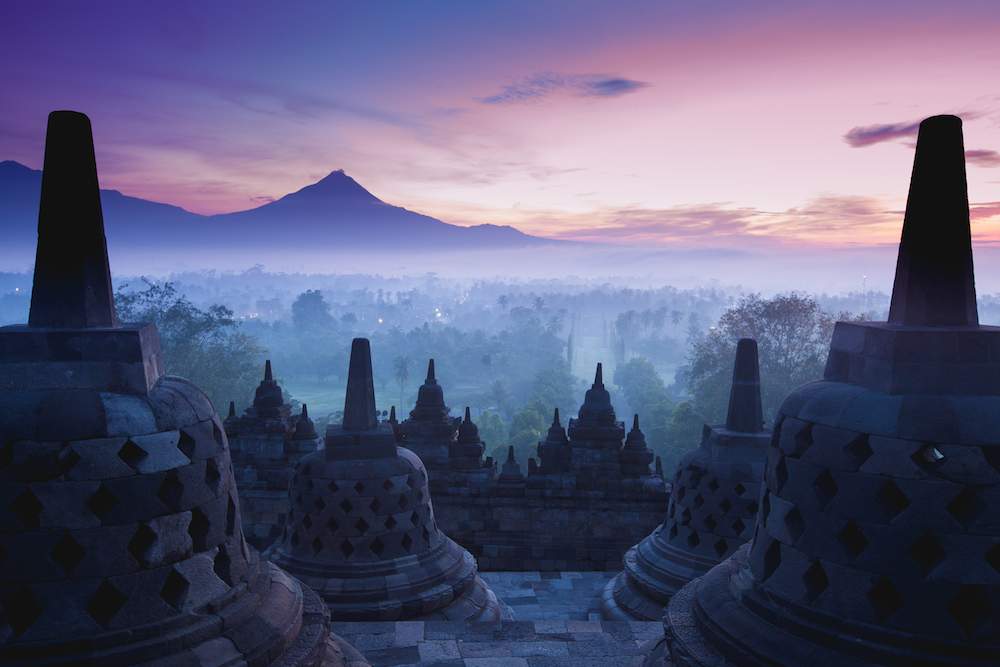
The world’s largest Buddhist temple is colossal, a vast pyramid perched atop a hill towering into the sky, woven with delicate stone carvings and watched over by more than 500 serene Buddhas. For five centuries Borobudur lay abandoned, and it wasn’t until 1814 when it was brought out of its long hibernation by the British ruler of Java Sir Thomas Stamford Raffles. Pilgrims once again flock here annually to celebrate Vesak making the temple the most visited site in Indonesia.
“Climbing all the way up Borobudur is a pilgrimage in itself…”
Climbing all the way up Borobudur is a pilgrimage in itself, the pyramidal temple guiding the faithful from one symbolic level to another on the ultimate journey to enlightenment.
Built from two million dark grey andesite blocks, the temple stands 29 metres (95ft) high, six massive square platforms topped by a further three round ones taking the form of the Buddhist Mandala. Over 3,000 bas-reliefs have been carved into the walls and balustrades of the shrine making this the largest collection of Buddhist sculpture on the planet. Nirvana is represented by a massive bell-shaped stupa 10 metres (33ft) in diameter. In its higher terraces, 72 open stupas, each containing a statue of Buddha, gaze across the sweeping valley
How to visit:Borobudur is 40km (25mi) from Yogyakarta, from where day tours can be booked. Alternatively, you can stay in Borobudur village near the park entrance and visit independently.
The World’s Largest Castle: Prague Castle, Czech Republic
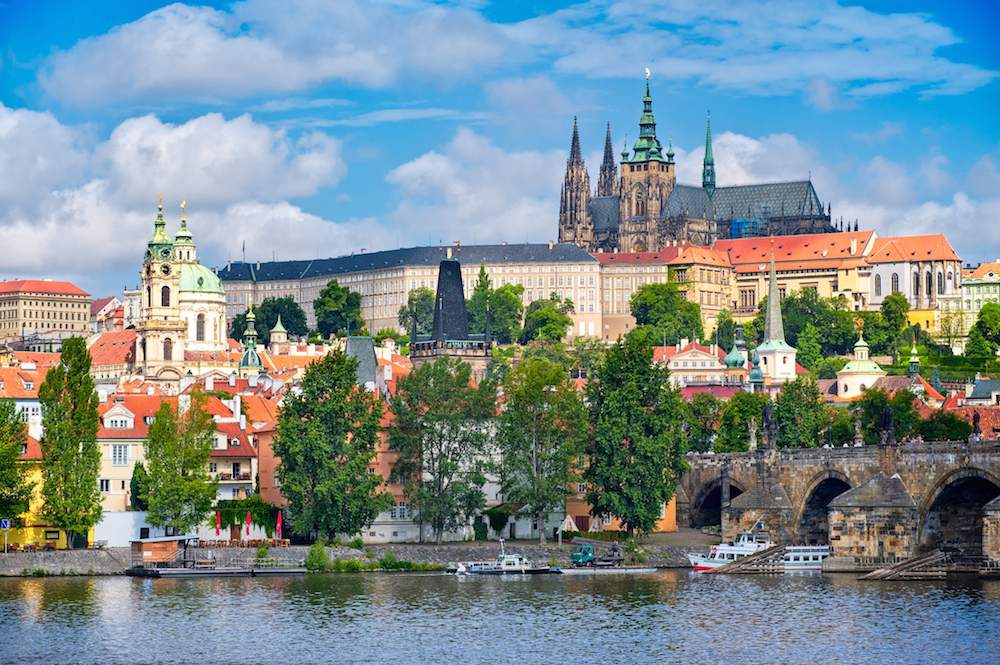
It’s hard to miss the largest castle in the world as it rises regally over the picturesque city of Prague. It is a fairy-tale fortress, its turrets and spires having been home to kings of Bohemia, Holy Roman emperors, and presidents of Czechoslovakia and the Czech Republic for over a thousand years.
It is not one building, but a jumble of palaces, museums and ecclesiastical buildings which together create a vast complex which stretches for over half a kilometre along the shore of the Vltava River. It occupies an area 70,000 m2 (17 acres) – the size of seven football pitches.
“…hidden deep within the castle’s recesses the Bohemian Crown Jewels are kept in secret.”
While the core of the castle dates to the 9th century, today it is a delightful jigsaw of architectural styles, a haphazard collection of Gothic, Romanesque, Baroque and Renaissance. The jewel in the royal crown is undoubtedly the St Vitcus Cathedral, the centrepiece of both the castle and the city – indeed it is the most important cathedral in the Czech Republic. Inside the castle complex there are museums to discover and art galleries to peruse, and somewhere, hidden deep within the castle’s recesses the Bohemian Crown Jewels are kept in secret.
How to visit:Prague is one of Europe’s top tourist destinations with a busy international airport, a wide range of hotels and many attractions. For more information on visiting the castle check out the website.
The World’s Highest Desert: Atacama Desert, Chile/Bolivia

In the foothills of South America’s Andes Mountains, a strip of desert runs along the Pacific coast of northern Chile, Bolivia and into Peru. Stretching 965 km (600mi) across the plateau at an average 4,000metres (13,123ft) above sea level it is the highest desert in the world, a harsh and inhospitable environment, where the blistering sun shines in a cloudless sky and fierce winds whip past towering peaks and puffing volcanoes.
In the heart of the Atacama Desert there are places which researchers believe haven’t seen rainfall for four centuries, with others receiving just 10cm (3in) of rain every 1,000 years – making this also the driest inhabited place in the world. The heart of the Atacama is so arid the mountains are glacier-free and not a blade of grass or even a resilient cactus grows here.
“Hollywood movies such as Space Odyssey were filmed in the red, dusty Valley of the Moon…”
The landscape is bizarre, fantastical and more reminiscent of Mars than anywhere on planet Earth. Hollywood movies such as Space Odyssey were filmed in the red, dusty Valley of the Moon, NASA scientists and their Mars explorers are frequent visitors, and astronomers take advantage of the 300 clear nights a year.
Wisps of smoke drift out of perfectly conical volcanoes, steaming geysers bubble, and lakes of red, green and powder blue play tricks on the eye. Only the hardiest of desert-dwellers can withstand life in this arid, barren plateau. Headdress-toting alpacas brave the unforgiving weather, majestic condors soar overhead and Andean flamingos seek warmth in the steaming thermal pools.
How to visit:One of the best bases for exploring the desert is San Pedro de Atacama, Chile whose nearest airport is Calama. Excursions are by organised tour.
Middle-of-the-Road
The World’s Worst Nuclear Disaster Site: Chernobyl and Pripyat, Ukraine
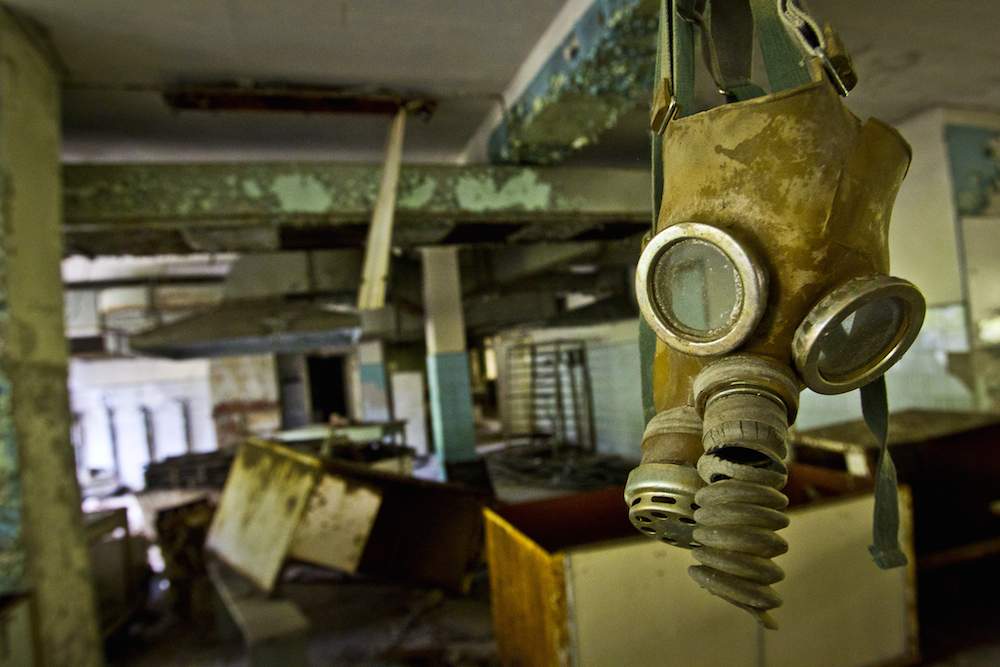
There are dates in history that will forever go down in infamy and 26th April 1986 is one of them. A catastrophic power surge and ensuing fire at the Chernobyl power plant sent a plume of radioactive particles into the air. The accident will go down as the worst nuclear disaster on earth, one which saw 50,000 people flee their homes never to return and a death toll that is still being counted almost three decades later. Indeed, the area around Chernobyl and Pripyat won’t be habitable for 20,000 years.
“Entering the ghost city of Pripyat is a chilling experience. “
Entering the ghost city of Pripyat is a chilling experience. Travel through a city unlived in for almost 30 years where plants and trees have taken over, winding across streets and through buildings in a tangle of overgrown disorder. Smashed windows reveal crumbling schools, apartments and shops littered with Soviet propaganda and possessions. In the heart of the apocalyptic town stands the most poignant of all Pripyat’s sights; the lonely ferris wheel, destined never to be used and a ghostly and eerie sight to behold.
How to visit: The site is two hours from Kiev and can only be visited as part of an organised tour. There are a number of companies offering tours including Tour Chernobyl and Tour Kiev.
The World’s Highest Point: Mt Chimborazo, Ecuador
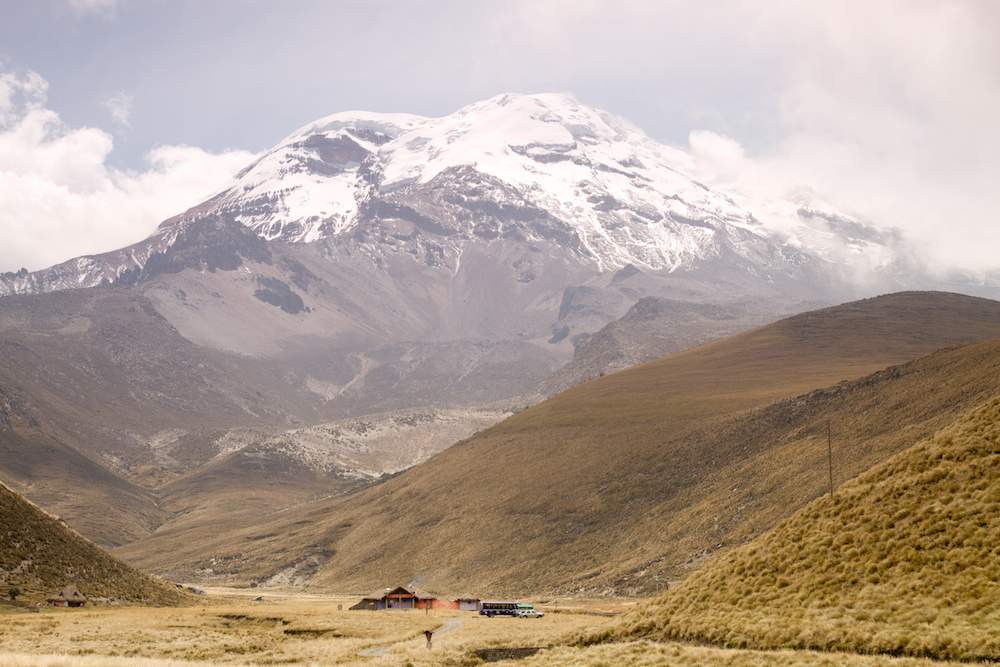
Mount Everest might be the tallest mountain on earth, but it certainly not the highest – and there is a very big difference. Measured from sea level Chimborazo falls 2,580metres (8464ft) short of the Himalayan giant, but because of the shape of Earth– which bulges like an oval at the equator – Mount Chimborazo’s summit is about 2.1km (1.3mi) farther from the centre of the earth than Everest’s.
“…because of the shape of Earth– which bulges like an oval at the equator – Mount Chimborazo’s summit is about 2.1km (1.3mi) farther from the centre of the earth than Everest’s.”
The mountain is huge, standing at 6,310 meters (20,720 ft.) tall and 125km (78mi) in circumference. Its four dormant peaks are riddled with glaciers and year-round snow covers its upper slopes. In the crisp blue air of the Andes its conical peak can be seen for over a hundred miles along the Ecuadorian coast towering above its neighbours in a region known as the Avenida de los Volcanes (Avenue of Volcanoes). Its lower slopes are protected by the Reserva de Produccion Faunistica Chimborazo, a national park created to preserve the habitat of the herds of woolly llamas, alpacas and vicuña that thrive in the chilly, thin air.
How to visit: Climbing Mount Chimborazo is a serious undertaking and hikers must be accompanied by a guide which can be arranged from the nearby town of Riobamba. It is a 10-hour round-trip, although shorter hikes are possible on the lower slopes.
The World’s Longest Navigable Underground River: Puerto Princesa, Palawan, Philippines
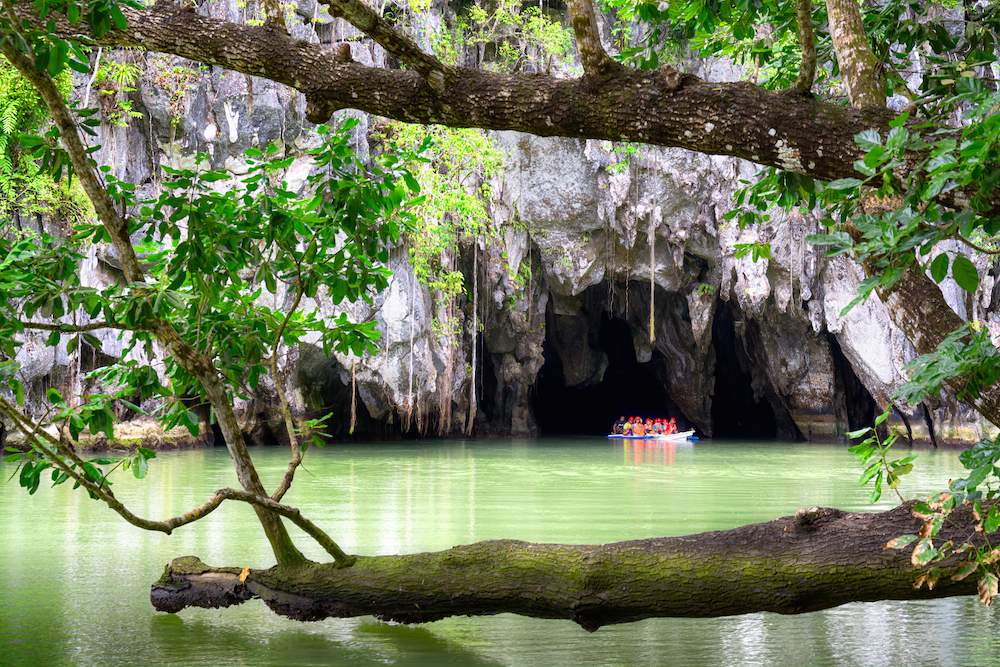
Despite being tipped from its podium as the world’s longest underground river in 2007 by one found beneath Mexico’s Yucatan, the
Puerto Princesa is certainly the longest one that can be traversed by boat or canoe, and sits in the heart of a region so beautiful and unique it has been declared both an UNESCO World Heritage Site and one of the New 7 Wonders of Nature.
The Cabayugan River pours down the slopes of Mt. Bloomfield before disappearing under Mt. St. Paul. Gushing underground it has gouged cavernous chambers in the limestone rocks, the vast caves – some of which measure 120m (393ft) wide by 60m (197ft) high – decorated by fantastical rock formations and inhabited by fish, snakes, insects and bats. Traditional paddleboats take visitors 4.3km (2.7mi) into the belly of the mountain, navigating the river upstream.
How to visit: Puerto Princesa city acts as the gateway to the national park from where tours can be arranged. It is two hours drive to the town of Sabang near the park entrance. Alternatively there are eco-lodges near the park and in Sabang.
The World’s Largest Freshwater Wetland: The Pantanal, Brazil
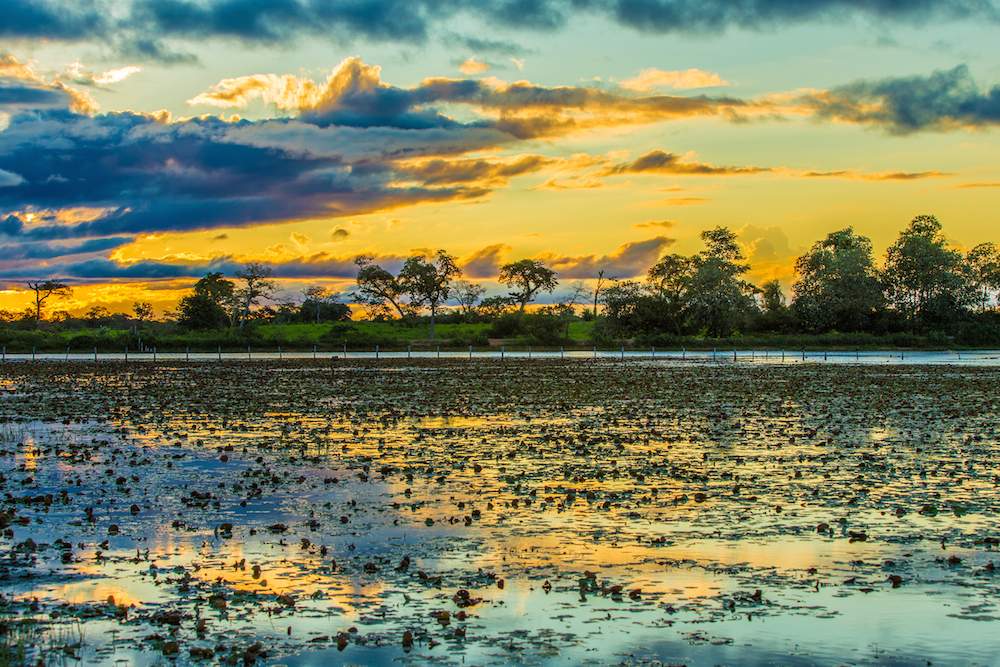
The Pantanal, located in Brazil’s southwest (and drifting into Bolivia and Paraguay), is a vast and savage wetland, the largest on the planet and over 10 times the size of Florida’s Everglades. An enormous landlocked river delta, its waters rise and fall with the seasons creating one of the most biologically rich environments in the world. In contrast to the Amazon Rainforest, where birds, animals and reptiles remain elusive in the dense jungle, the Pantanal’s open wetlands, rivers and marshes make it one of the planet’s best wildlife-spotting regions, a perfect and abundant circle of life second only to Africa’s teeming reserves.
“It is a swirl of colour and life, an ecological honey-pot filled with butterflies, insects, blossoming flowers, schools of fish and birds of every size with feathers of every colour.”
Sporadic cattle ranches inhabit the few raised areas of land offering rustic and authentic accommodation for hardy visitors. Horses are the main mode of transport, wading through pools adorned with great lily pads and ambling past sunbathing anacondas wrapped around tree branches. Caiman alligators pop above the surface of the water, Capuchin and Howler monkeys swing through the trees, peccaries (wild pigs) grunt and splash through the swamps and giant otters ply the rivers in search of their favourite food, red-bellied piranhas. It is a swirl of colour and life, an ecological honey-pot filled with butterflies, insects, blossoming flowers, schools of fish and birds of every size with feathers of every colour.
How to visit: The Pantanal is served by Cuiabá and Campo Grande airports, which connect to São Paulo. Light aircraft or jeep tours take visitors to the cattle stations for two- to six-day trips from both cities as well as Corumbá or Miranda.
Once-in-a-Lifetime
The World’s Largest Cave: Hang Son Doong, Vietnam
Deep in the remote Vietnamese jungle, buried for centuries below a tangle of inhospitable vegetation lays a gargantuan grotto to beat all others – the world’s largest cave.
Imagine a cave large enough to fit a city street in – complete with 40-storey skyscrapers – and you’re imaging just one of Hang Son Doong’s vast chambers. Measuring up to 180 metres (590ft) in height, 200 metres (656ft) in width and 9 kilometres (5.6mi) in length it is an other-worldly place where 80 metre (262ft) high stalagmites tower into the dark, a fierce river gushes through and waterfalls pour down the walls.
“Imagine a cave large enough to fit a city street in – complete with 40-storey skyscrapers “
Inside is a living ecosystem untouched for millions of years, a micro-world of bizarre formations and unique ecological features. Two vast skylights allow light to flood the cave floor giving life to a jungle with trees 30 metres (98ft) tall and previously undiscovered plant and animal species.
How to visit: Limited numbers of permits are issued every year and six day trekking and rappelling tours can be arranged through Oxalis Adventures.
The World’s Fastest-Moving Glacier: Sermeq Kujalleq, Greenland
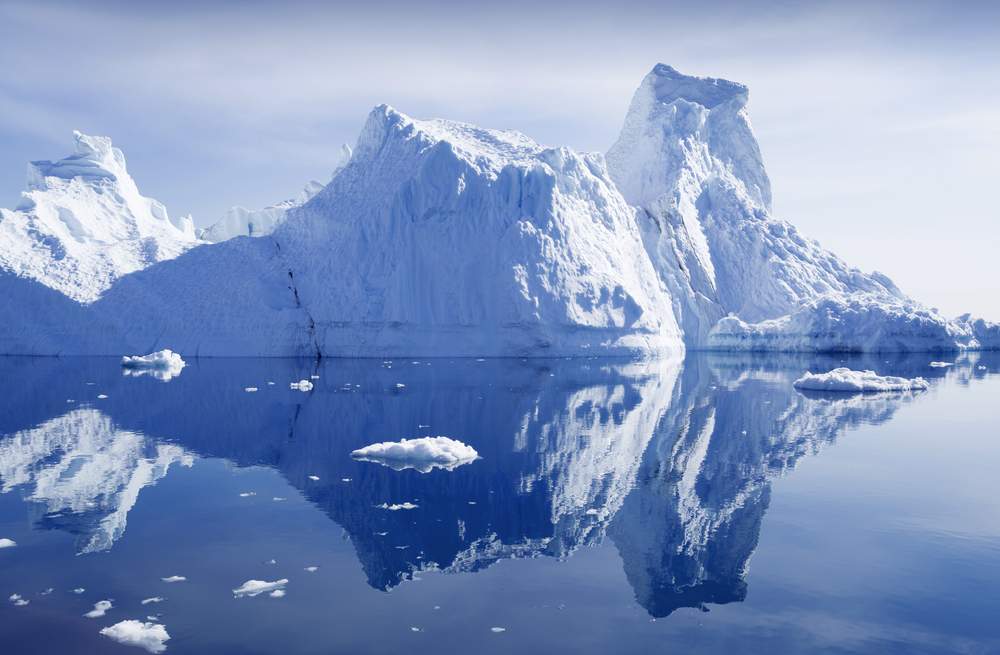
Moving at a rate of at a rate of 40 metres (131ft) per day the vast glacier (believed to have caused the iceberg that sunk the
Titanic) sheds great chunks of ice into the frigid seas. In Greenland’s remote southwest, the mighty Sermeq Kujalleq is quite literally just the tip of the iceberg (or glacier), the 56km-long icefjord raging down from the Greenland ice cap.
The statistics are mind-boggling; the glacier calves approximately 46 cubic kilometres (35 cubic mi) of ice annually – the melted equivalent would supply all of the USA’s water needs for a year. Some of the icebergs produced by the glacier can be 1.5 cubic kilometres (0.9 cubic mi) in size, the equivalent of 30 football fields. And Greenland’s ice cap is the second largest outside of Antarctica – together these two ice caps hold 99% of the world’s fresh water.
“…like much of the enormous country, it is accessible only by air and boat.”
This polar region, 250km (155mi) north of the Arctic Circle, is a fascinating world of gargantuan ice rivers, swirling northern lights and thriving arctic wildlife. For 4,400 years people have lived on the shoulder of the vast icefjord in the charming little town of Ilulissat although no roads lead here and, like much of the enormous country, it is accessible only by air and boat.
How to visit: Flights go to Greenland’s capital Nuuk from Reykjavik, Iceland and Copenhagen, Denmark, and from there on to Ilulissat. Tour companies offer adventure trips details of which can be found on the tourism website.
The World’s Largest Ice Hotel: ICEHOTEL, Sweden
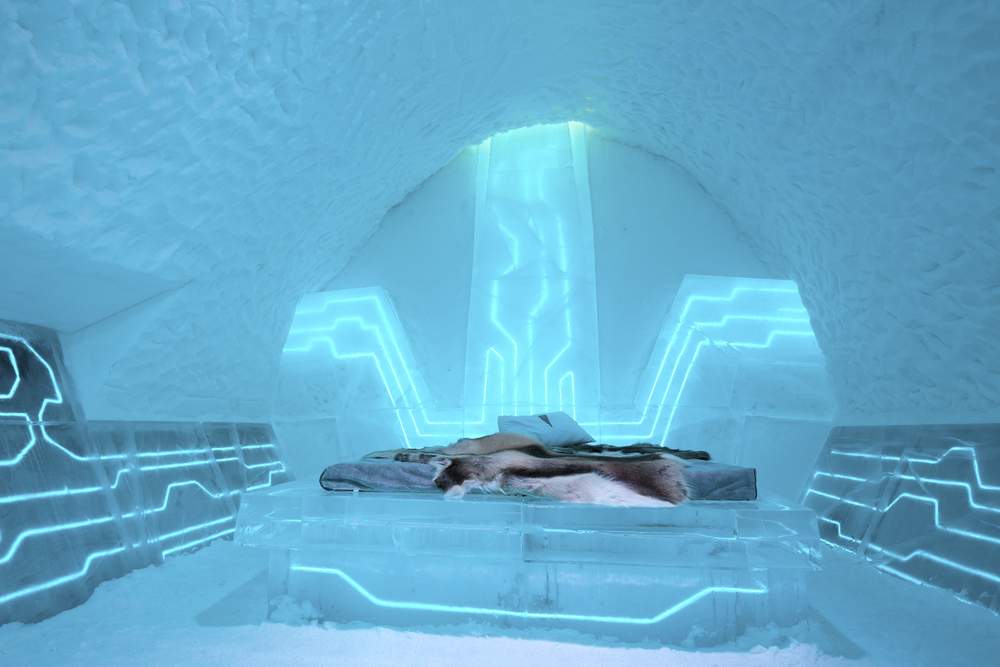
A night spent in the 5,500 square metre (8,000sq ft) ICEHOTEL requires a wilderness-style orientation and a very thick sleeping bag – both of which are highly appreciated as the rooms are a chilly -5°C.
“The frozen doors open in December where, for four months, 50,000 people descend on the village of Jukkasjärvi, to experience this artistic exhibition and engineering masterpiece.”
Built from great slabs of ice carved out of the River Torne in March, the 65 rooms are rebuilt each year, only to melt away a few months later when the sun returns to this northern stretch. It is a year-round cycle, a project built from passion and artistic expression that is at the mercy of the extreme seasons. Spring sees the harvesting of the 2,500, man-sized blocks of pure ice – stored in chilled warehouses – and early winter brings with it a flurry of artists and engineers who come to carve life into the sculpted ice rooms. The frozen doors open in December where, for four months, 50,000 people descend on the village of Jukkasjärvi, to experience this artistic exhibition and engineering masterpiece.
Without plumbing and bathroom facilities – and because the bed is made from a giant chunk of ice – most stay just one night in the cold rooms before moving next door to the ‘warm’ hotel. Artists from around the globe apply to design the ice suites, each room and each year bringing with it a smörgåsbord of styles and visions – from snowballs to dragons.
How to visit: The ICEHOTEL and village of Jukkasjärvi are 15km (9.3mi) from Kiruna. The ‘warm’ section of the hotel is open year round and the cold rooms from December to April. For further information and to book a room visit the ICEHOTEL website.
The World’s Most Expensive Restaurant: Sublimotion, Ibiza

For those in search of a relaxed evening of romance, quiet conversation and a three-course meal, then Sublimotion is probably not the place to go. If however, it’s a multi-sensory meal of twenty fantastical dishes served amidst a swirling, ever-changing dining hall of 360 degree projections enjoyed alongside 11 other guests, then this is just the place.
“It is an evening of pure theatre as the room is transformed into an all-encompassing cinema.”
The latest brainchild of famed, double Michelin-starred Spanish chef Paco Roncero is an innovative, ambitious and never-before-seen dining experience designed to stimulate the senses – we’re talking flying plates, spinning toadstools and self-mixing margaritas. The price for an evening at Sublimotion however, might be the block over which many stumble – at £1200 ($2,000) per person it is the world’s most expensive restaurant.
It is an evening of pure theatre as the room is transformed into an all-encompassing cinema. As each dish is served amidst a flurry of eccentricity, diners are transported on a journey from the North Pole – where they carve their own dish from an – to the baroque Versailles, where butterflies dart across the table. From a foie gras doughnut that enters the room by balloon, to levitating, spinning macaroons, there are unexpected turns. Nitrogen-frozen olive oil parcels hang on a mini washing line, and liquid hydrogen mystically floats out of most dishes. There are test tubes of margarita ingredients, rich liquid cheese, journeys to ancient libraries and fiery hells.
How to visit:To make a reservation visit their website.
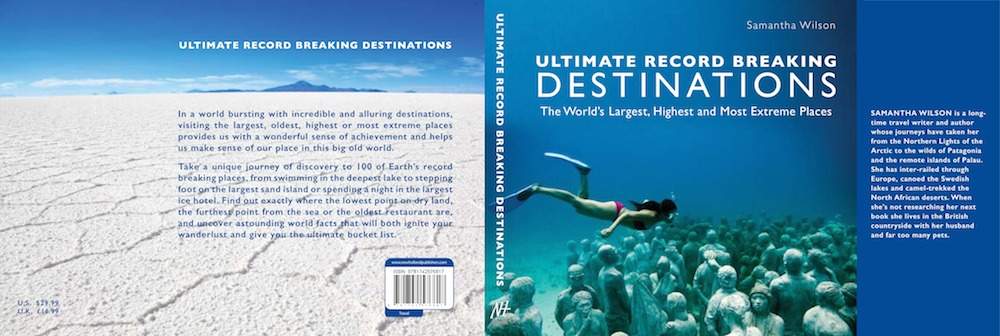
Samantha Wilson is a long time travel writer and author of the new book Ultimate Record Breaking Destinations by New Holland. She has travelled the world compiling the most incredible destinations and her journeys have taken her from the northern lights of the Arctic to the wilds of Patagonia to the underwater world of Palau. You can buy Ultimate Record Breaking Destinations at major book shops including Waterstones and Stanford’s.











